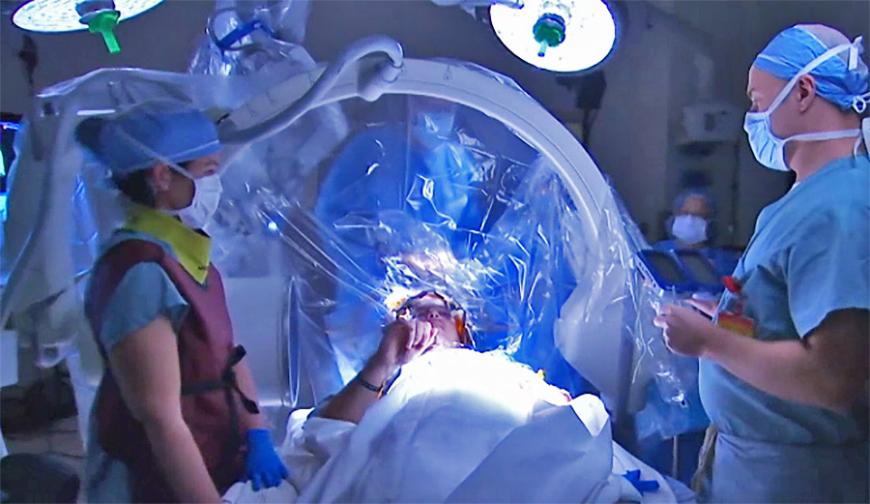What Are the Different Types of Brain Surgery?
Brain surgery is a complex and delicate procedure that involves operating on the brain to treat various medical conditions. It is a highly specialized field of medicine that requires extensive training and expertise. This article provides an overview of the different types of brain surgery, their purposes, and the associated risks and benefits.

I. Types Of Brain Surgery
1. Open Brain Surgery
Open brain surgery involves making an incision in the skull to directly access the brain. This type of surgery is typically used for more complex procedures that require a wider surgical field.
a) Craniotomy:- Definition: A surgical procedure in which a portion of the skull is temporarily removed to access the brain.
- Procedure: A surgeon makes an incision in the scalp and removes a section of the skull using specialized instruments.
- Indications: Craniotomy is commonly used to treat brain tumors, aneurysms, arteriovenous malformations, and epilepsy.
- Risks: Potential risks include infection, bleeding, stroke, and damage to surrounding brain tissue.
- Recovery: Recovery time varies depending on the extent of the surgery, but typically involves several weeks of hospitalization followed by rehabilitation.
- Definition: A surgical procedure in which a portion of the skull is permanently removed to relieve pressure on the brain.
- Procedure: Similar to a craniotomy, but the removed bone flap is not replaced.
- Indications: Craniectomy is often performed in cases of severe head injury, stroke, or brain swelling.
- Risks: Potential risks include infection, bleeding, and cosmetic concerns.
- Recovery: Recovery time varies but typically involves several weeks of hospitalization followed by rehabilitation.
- Definition: A surgical procedure to create an opening in the ventricles of the brain to drain excess cerebrospinal fluid (CSF).
- Procedure: A small incision is made in the skull, and a catheter is inserted into the ventricle to drain the CSF.
- Indications: Ventriculostomy is used to treat hydrocephalus, a condition characterized by an abnormal accumulation of CSF in the brain.
- Risks: Potential risks include infection, bleeding, and damage to surrounding brain tissue.
- Recovery: Recovery time is typically shorter compared to other open brain surgeries, but may vary depending on the underlying condition.
2. Minimally Invasive Brain Surgery
Minimally invasive brain surgery involves using specialized techniques and instruments to access the brain through smaller incisions, minimizing tissue damage and reducing the risk of complications.
a) Stereotactic Radiosurgery:- Definition: A non-invasive procedure that uses precisely focused radiation beams to target and destroy small brain tumors or lesions.
- Procedure: A stereotactic frame is attached to the patient's head, and imaging studies are used to precisely locate the target area. Radiation beams are then delivered to the target with pinpoint accuracy.
- Indications: Stereotactic radiosurgery is commonly used to treat small, inoperable brain tumors, arteriovenous malformations, and trigeminal neuralgia.
- Risks: Potential risks include radiation-induced side effects such as hair loss, skin irritation, and rarely, damage to surrounding brain tissue.
- Recovery: Recovery time is typically shorter compared to open brain surgery, and most patients can resume normal activities within a few days.
- Definition: A minimally invasive procedure that uses a laser to heat and destroy brain tumors or lesions.
- Procedure: A small incision is made in the skull, and a laser probe is inserted into the tumor or lesion. The laser energy is then used to heat and destroy the target tissue.
- Indications: LITT is commonly used to treat small, inoperable brain tumors, especially those located deep within the brain.
- Risks: Potential risks include bleeding, infection, and damage to surrounding brain tissue.
- Recovery: Recovery time is typically shorter compared to open brain surgery, and most patients can resume normal activities within a few days.
- Definition: A surgical procedure that involves implanting electrodes into specific brain regions to deliver electrical stimulation to alleviate symptoms of certain neurological disorders.
- Procedure: A small incision is made in the skull, and electrodes are inserted into the target brain region. The electrodes are connected to a pacemaker-like device implanted in the chest, which delivers electrical stimulation to the brain.
- Indications: DBS is commonly used to treat Parkinson's disease, essential tremor, and dystonia.
- Risks: Potential risks include infection, bleeding, and damage to surrounding brain tissue.
- Recovery: Recovery time is typically shorter compared to open brain surgery, and most patients can resume normal activities within a few days.
3. Endoscopic Brain Surgery
Endoscopic brain surgery involves using a small camera and specialized instruments inserted through a small incision to visualize and operate on the brain.
- Definition: A minimally invasive surgical technique that uses a small camera and specialized instruments to visualize and operate on the brain through a small incision.
- Procedure: A small incision is made in the skull, and a thin tube with a camera (endoscope) is inserted into the brain. The surgeon can then visualize the surgical site on a monitor and use specialized instruments to perform the necessary procedures.
- Indications: Endoscopic brain surgery is commonly used to treat brain tumors, cysts, and other lesions located deep within the brain.
- Risks: Potential risks include bleeding, infection, and damage to surrounding brain tissue.
- Recovery: Recovery time is typically shorter compared to open brain surgery, and most patients can resume normal activities within a few days.
II. Importance And Future Of Brain Surgery

Brain surgery is a critical medical procedure that can save lives and improve the quality of life for patients with various neurological conditions. Advances in brain surgery techniques, such as minimally invasive surgery and the use of robotic technology, have significantly improved outcomes and reduced risks. The future of brain surgery holds promise for further advancements in technology, personalized treatment approaches, and improved patient care.
YesNo

Leave a Reply